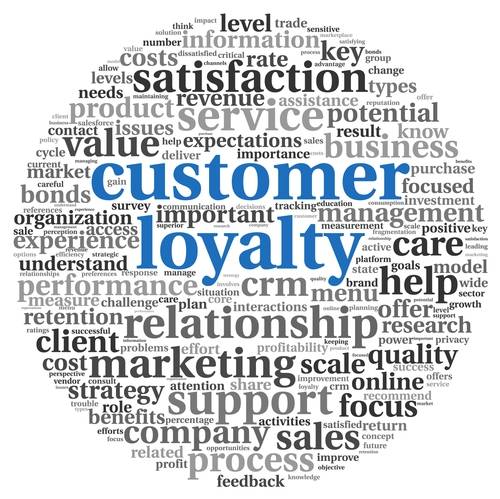
Muhammad Farrukh Iqbal (August 5, 2014)
Customer loyalty is all about building customer attitude towards favoring a particular brand over others. There can be many reasons why customers prefer one brand over others which includes convenience, performance, reliability or familiarity to name just a few. Customer loyalty ensures people do not switch brands often. The process of building loyalty in customers directly impacts customers buying patterns, which encourages them to increase their spending on a particular product or service. Loyalty can be built through several ways such as increasing customer satisfaction levels through quality of service and adding convenience for your customers.
Businesses need to take care of every little detail involved when devising strategies. Let us delve into the following tips for building customer loyalty which can go a long way in helping you retain a larger customer base.
Treat every customer as an individual, giving them special attention and focusing on their needs. Thank them for the purchases they make and look into how you can constantly improve on their shopping experience. Properly training your customer service staff plays a very important role in delivering that holistic experience which wins you brand loyalty. Make sure your customers have a warm and welcoming experience whenever they shop with you. In order to win them over you need to guarantee that the products or services your company is offering provides the value associated with it.
Every single word or sentence that a customer speaks about your company is critical. Make sure every feedback instance collected at any touch-point is incorporated in improving the products or services that you are offering to your customers. Feedback is important in analyzing what your customers think and want. This enables your company to devise a business strategy accordingly in order to retain them. There are many traditional and newly developed methods of collecting customer feedback.
For collecting feedback online, you can get the required information using contact forms and emails. Surveys, which are simple to follow can be helpful in getting customers word on new or already established brands in the market. Technology has enabled businesses to indulge into social listening, gauging customers feedback via likes, re-tweets, recommendations, and pluses, a more direct yet subtle way of knowing how customers feel about something.
Solid customer loyalty programs need to be created around your customers buying patterns. The loyalty program should be motivating for the customers enticing them to make more purchases. These programs should be able to establish a personal level connection with customers.
Your customers do not really want a complex loyalty program where they might need a scientific calculator to work it out. They want something simple that they can understand.
It is better to have an idea about how competitors are attracting customers and building loyalty. But you must not follow them in their approach. Imitating a customer loyalty program started off by your competitor will confuse your customers. Think of creative and new ways of attracting customers. Try to redefine the dynamics of customer loyalty program by adding new concepts.
You need to proactively follow how your customers are interacting with your company. A reactive mode suggests to your customers that you only react to firefight or when the situation is already out of hand. However, taking things into your own hands by becoming more proactive suggests to customers that your company takes care of the problems beforehand. The ideology of being proactive suggests that you are on top of your game in customer service management. How do businesses differentiate between being proactive or reactive? A proactive business management always keeps looking for potential future problems and solves them before they appear. On the contrary, reactive organizations wait for the problems to occur and then they react to the situation to diffuse it when customers start complaining.
An omni-channel communication strategy has become inevitable. You need to make sure that all the communication channels of your company are active and can respond to customers’ queries or problems. Guarantee your availability on social media networks, telephone, email, and any other medium that you have put in place to resolve customer issues. This is a step in the right direction which indicates reliability to customers and it works towards building trust and brand loyalty.
Customer loyalty is a long and difficult process as trust cannot be built in a day. Therefore, you need to make sure that you remain persistent with your approach and keep bringing in improvements by identifying areas of concern.

Healthcare workers are entrusted with the great responsibility of caring for people. In order to continually offer comfort and care to people, there are certain skills that healthcare professionals need to master. Of course there are the obvious ones related...
Read More
Creative thinking is one of the most important and sought after soft skills that you need to acquire in an increasingly digital landscape of 2021 and beyond. Creative thinking skills are required in many different job roles to come up...
Read More
Sales are the backbone of any business and great salespeople are an asset for the company. Some people are naturally gifted in the art of persuasive communication and negotiation skills required to convince clients and effectively sell more. However, certain...
Read More